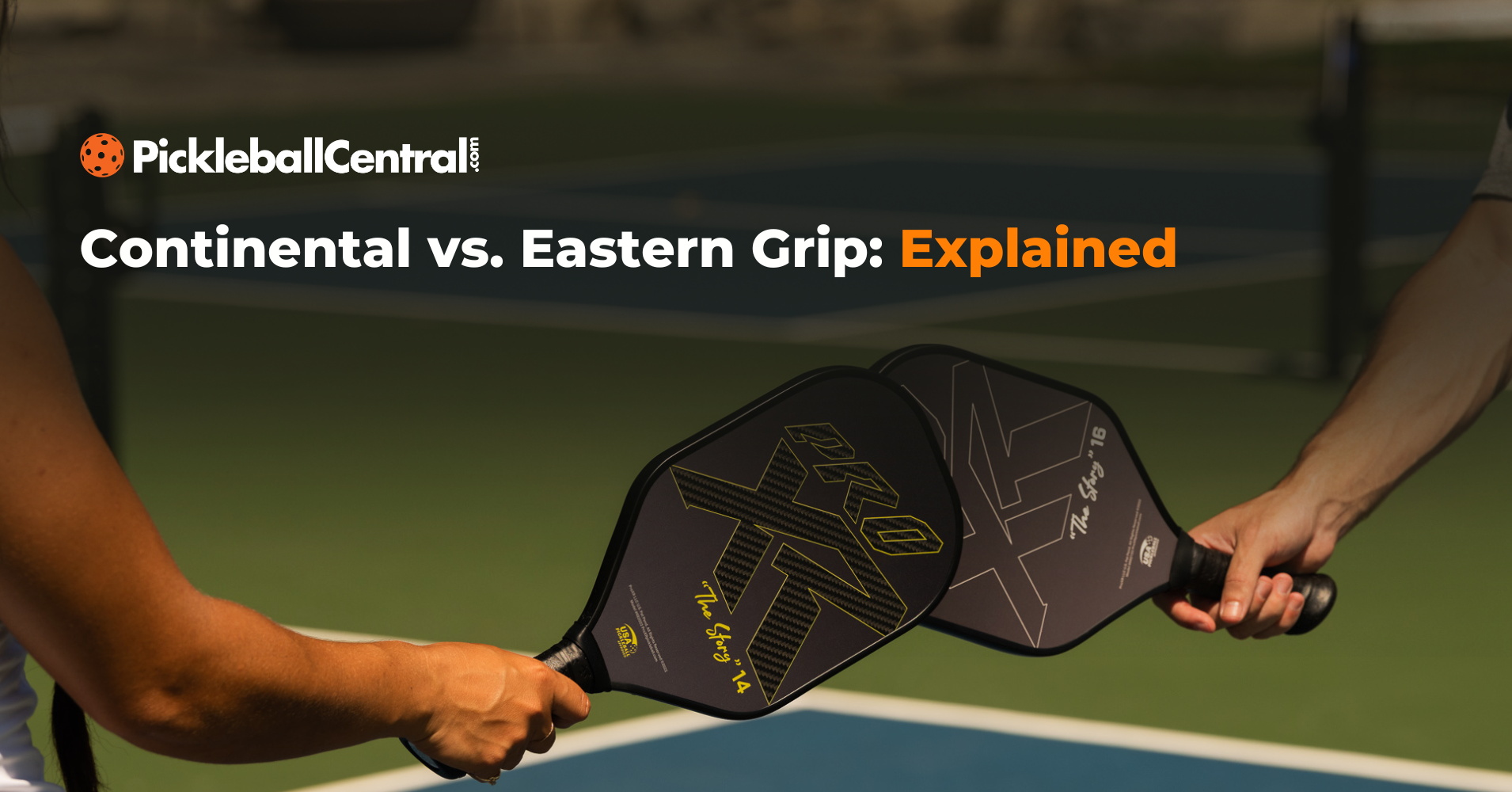Over your time playing pickleball you may have heard your friends talk about what kind of grip they use, or you may have noticed paddles like the new line from ProXR that offer a slanted grip that is advertised as either Continental or Eastern. We are going to break down what these grips are and how they can help your game so that you can continue to progress as a player.

The most obvious difference between Continental and Eastern grips is the orientation of the paddle face relative to your hand. The Continental grip originated on the clay tennis courts of Europe and is still around today as a great beginner and all-around way to hold the paddle. Though it can be used for forehand drives and big backhand winners, it really thrives near the kitchen in the modern game of pickleball.

The reason people have drifted away from this grip for certain shots is because it situates the paddle face neutrally relative to your hand which makes it hard to return hard ground strokes or hit forehand and backhand drives with topspin. Using this grip regularly on drives from deeper in the court will lead to more misses long and leave you feeling unprepared to return big drives.
Just because the continental grip is losing popularity doesn’t mean you shouldn’t use it all. The neutral face position of the continental grip gives you exceptional control in the kitchen where dinks are the name of the game. This neutral position helps you place dinks wherever you want, while cutting down on reload times, to ensure you are ready to return your opponent’s shots on both your forehand and backhand sides.
As mentioned earlier, the continental grip also holds impressive value as a beginner grip that works to simplify the game of pickleball for newer players. When you dive deeper into your bag of technical shots you will find that the continental grip holds its own. When dinking at the net the game can quickly evolve to call for under spin or slice dinks, which the continental grip sets you up for nicely. This grip also puts your arm and paddle in a good position to volley at the net and hit big overhead slams that end the point.
While there are more technical grips for more technical shots on the pickleball court, you can rest assured that the continental grip gives you all of the control and power you will need to send your opponent’s running to the showers.
As you progress as a pickleball player and start to develop a game that caters to your specific skillset, you may need to consider switching to the Eastern grip for certain shots. The Eastern grip, when on the forehand, will shut the face of your paddle towards the ground, making your timing easier on forehand drives. When you are hitting a flat drive, the paddle is already angled towards the ground, also known as a closed face. This closed face will prevent errant drives that fly over the baseline and help you use the texture on your paddle face for topspin drives as well. Basically, the Eastern grip will help you add more control (? control or power and topspin) to your drives both flat and with topspin.
Since both grips have their redeeming qualities it raises an important question, how should you hold your paddle when you are in the ready position? While there are no hard and fast rules, if it works for you it works, we are going to talk about the generally accepted concepts.
As you get more comfortable as a player, you should find yourself holding your paddle in an Eastern grip while you serve and return from the baseline of the court. This is because you generally want to hit both of these shots forehand with both power and placement. As the point progresses and you find yourself getting closer to the net, you will want to switch to a Continental grip. By using both hands to quickly reposition your grip to present the paddle face in a neutral position, you will be prepared to return hard slams with a block and hit strategic dinks both forehand and backhand comfortably. When your opponent hits a dink too high, you can quickly rotate your hand back to a continental grip and hit a powerful winner that is virtually impossible to return.
Throughout your journey of playing pickleball you will find yourself making constant tweaks to your game and your grip choice will be an important one. Eventually, hitting your drives, serves and returns, both forehand and backhand with an Eastern grip will go a long way in helping you dictate the game by staying on the offensive. Meanwhile, when you battle back into the point at the net, the Continental grip will help you comfortably keep forehand and backhand volleys and dinks in play and low, preventing your opponent from hitting a big forehand volley that you can’t reach.

ProXR has released their new line of paddles with multiple versions of their XR-23 handle to help you boost the effectiveness and comfort of your go-to grip. This handle boasts a 23-degree slope that is either parallel or perpendicular to the paddle face. The Continental Standard version is parallel to the face to help you keep the face in a neutral position, while the Eastern Standard is rotated 90-degrees to situate the face closed for topspin winners. Both of these designs offer a slim option that offers a slimmer shelf and butt cap that may help you switch grips more comfortably.
Now that you know the different grips and their respective advantages, it is time to start implementing them in both practice and games going forward so that you can get a competitive edge, win more matches, and have more fun.
Share Product:
SHARE THIS:

